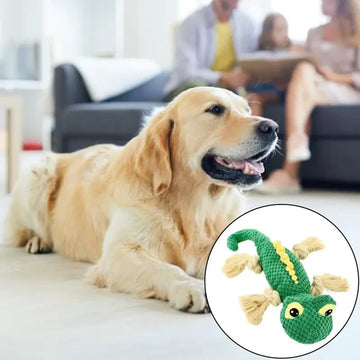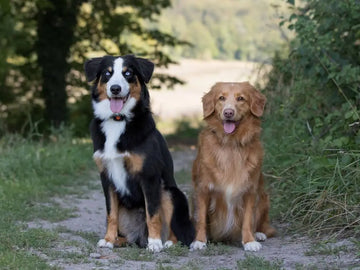Dogs are fascinating companions, full of quirky behaviors that often leave their owners both amused and curious. Among these behaviors, one of the most intriguing is their tendency to shake their toys vigorously. If you've ever wondered why dogs shake their toys, the reasons are deeply rooted in their instincts, play behavior, and emotional needs. This article delves into the various factors that explain this common canine habit, offering insights into what it reveals about your furry friend.
The Evolutionary Instinct Behind the Behavior
Dogs shaking their toys is not merely a playful gesture—it’s a behavior inherited from their wild ancestors. Wolves, the predecessors of domestic dogs, often used shaking as a method to kill prey quickly by snapping its neck. This instinct has been passed down through generations, even though most modern dogs no longer need to hunt for survival. When your dog shakes a toy, it’s mimicking this instinctual action, showcasing the hunter within.
In the wild, such movements were necessary for wolves and wild canines to secure food. Today, even the most pampered pets retain a spark of this ancestral drive, which often emerges during play. This instinct is most noticeable when your dog grabs soft toys, especially those resembling small animals, and shakes them energetically.
Playful Expression and Energy Release
For domesticated dogs, shaking toys is often a form of play rather than a survival tactic. Dogs are naturally playful creatures, and this behavior allows them to burn off excess energy. It’s their way of entertaining themselves while practicing movements that once had a functional purpose in the wild.
The act of shaking toys combines mental stimulation with physical activity, helping to keep dogs engaged and healthy. Using dog interactive toys, such as puzzle toys or squeaky plushes, can add another layer of enjoyment and enrichment to playtime. These toys challenge dogs mentally while allowing them to express their playful instincts, making their toy-shaking sessions even more satisfying.
Channeling Prey Drive
Many breeds, particularly terriers and retrievers, have a strong prey drive. This instinctual desire to chase, catch, and "kill" is often redirected toward toys in a domestic environment. When a dog shakes a plush toy or rope, it’s simulating the act of subduing prey. This behavior is especially pronounced in dogs bred for hunting, such as spaniels, pointers, or breeds tasked with catching vermin.
Rope toys and dog tug toys are excellent tools for encouraging this natural behavior in a controlled and constructive way. By engaging in a friendly game of tug-of-war, you can strengthen your bond with your dog while allowing them to satisfy their prey-driven instincts. It’s a win-win scenario for both pets and owners.
Emotional Satisfaction and Stress Relief
Shaking toys isn’t always about instinct or energy—it can also provide emotional benefits. Dogs, like humans, experience stress and anxiety and need outlets to release tension. Toy shaking can serve as a self-soothing mechanism, helping them to calm down and feel more in control of their environment.
Additionally, the simple joy of playing and engaging with a favorite toy brings emotional satisfaction to dogs. Providing the best dog toys for their preferences—whether squeaky toys, tug ropes, or interactive puzzles—ensures they have the tools to channel stress and find happiness. For dogs prone to boredom or separation anxiety, the right toys can make a world of difference.
Bonding and Social Interaction
When dogs shake their toys in the presence of their owners or other pets, it’s often an invitation to interact. The act of shaking a toy can be a playful display to get attention, share excitement, or initiate a game. This behavior helps foster social connections, making playtime a bonding experience.
For example, if your dog shakes a toy and then drops it at your feet, they may be asking you to join their game. By engaging with them—whether through fetch, tug-of-war, or simple tossing—you strengthen your relationship and build trust. Incorporating dog interactive toys into these games can further enhance this bond while keeping your dog mentally and physically stimulated.
Toy Preference and Shaking Behavior
Interestingly, not all toys trigger the shaking response equally. Dogs often prefer soft, squeaky toys that resemble small prey animals. The squeak mimics the sound of a distressed animal, triggering their predatory instincts and making the shaking action even more rewarding.
If your dog favors plush toys, you may notice this behavior more frequently. However, durable toys like rubber bones or ropes can also encourage similar movements, especially during games like tug-of-war. Rotating toys regularly and offering a variety of shapes and textures can keep your dog engaged and satisfied, while helping you identify the best dog toys for their unique preferences.
When to Be Concerned
While shaking toys is typically harmless and normal, there are situations where it might indicate a problem. Excessive or overly aggressive shaking, especially if accompanied by growling or snapping, can signal frustration, stress, or pent-up energy. Similarly, if your dog starts shaking inappropriate objects, such as shoes or furniture, it may be a sign of boredom or insufficient exercise.
In such cases, introducing new dog tug toys or interactive options can help redirect their energy toward appropriate outlets. Ensuring your dog gets enough physical activity and mental stimulation through daily walks, play sessions, and toys can prevent destructive or obsessive behaviors from developing.
Safety Tips for Toy Shaking
While this behavior is generally safe, it’s essential to choose toys wisely. Opt for durable, high-quality options that won’t easily break apart or pose choking hazards. Avoid toys with small parts, such as buttons or beads, which can be swallowed. Supervise play sessions with new toys to ensure they’re suitable for your dog’s size and chewing habits.
In conclusion, dogs shake their toys for various reasons, from expressing natural instincts to seeking emotional satisfaction and playful interaction. Understanding this behavior helps us appreciate the complexity of our furry companions and their needs. By providing safe and stimulating toys, such as dog interactive toys or dog tug toys, you can encourage healthy play while supporting your dog’s mental and physical well-being.










